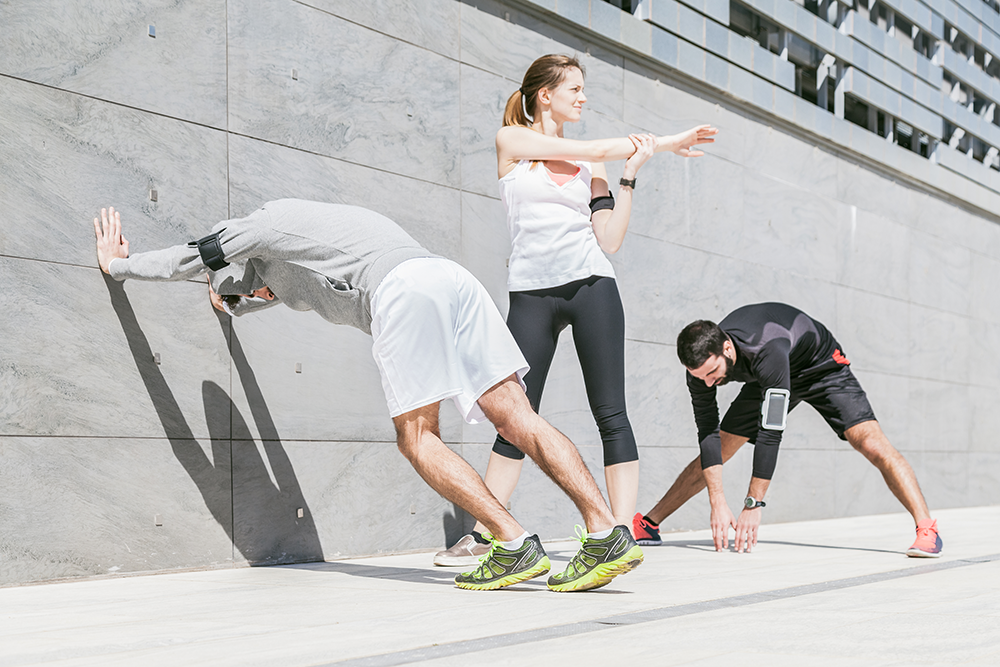
1. It is the shortest path to success
The main job of a trainer in the role of a personal trainer is to optimize results in the shortest possible time. We could say that personal training is the ultimate "shortcut" to achieving your goals and there are many specific reasons for this. Incorrect exercise technique, the wrong choice of training programs, poor adjustment of load components, lack of motivation and injuries are just a few of the reasons that either delay the appearance of results or nullify the possibility of success. A well-trained personal trainer keeps the exerciser on track, with properly designed workouts and away from injuries, training plateaus and setbacks
2. Personalized approach
If you need something (or a lot) more than your training, the personalized approach to your needs and goals is necessary. It is not only about achieving a better level of health and performance of your body, but also about avoiding unpleasant situations of failure, lack of motivation due to stagnation and injuries. The personal trainer deals with the personal needs of only one person at a time, precisely to be able to prevent the above and be able to lead to optimal results. We only have a personalized approach when the gymnast takes into account all the individual characteristics of his trainee in his gymnastics and planning. Consider that everyone's individual characteristics are defined by a number of factors such as medical history, training background, somatometric characteristics, current condition, specifics of activity, purpose and expectations for the future, characteristics of the individual's psychology, the time period, the training space, the time available for exercise, the structure of everyday life and many more. All these factors are taken into account by the trainer in order to prepare a personalized training plan (an appropriate "response") and to implement it in the most appropriate way. The end result is not something that "many have done and succeeded", nor something of the style "it will probably work for you too", but the surest, shortest and safest way for only you to succeed.
3. Education and the legacy it leaves you
One of the most basic advantages of Personal Training (by properly trained trainers) is the training it provides in exercise techniques, training systems and methods as well as in the formation of the right attitude towards issues of physical education and quality of life. Techniques of simple exercises can be taught with greater safety and speed, making the training set much more efficient, while in more difficult technical exercises (weight lifting, instrumental gymnastics, etc.) the absolute dedication of the trainer over the trainee is imperative both for success as well as for his safety.
Regardless of the techniques of the exercises, a Personal Trainer provides the "acquaintance" with a variety of training systems and methods. This process enriches the practitioner's background and leads both to increased results and to a strengthening of the practitioner's motivation to exercise. To the above technical characteristics of the training contents is added the overall information given through the discussion and the frequent friction between trainee and trainer, which completes, or rather better complements, the training provided by a personal trainer.
All this results in training the practitioner in matters of health, exercise and quality of life, knowledge which will follow him throughout his life.
4. Periodization and Planning of an annual training plan
Almost everyone knows that you can't expect results by doing the same things the same way every day, but few know why. The reason is that, in order to produce results through an exercise program, this program should – among other things – alternate between periods in accordance with the principles and laws of coaching. This process is called periodization. It is about planning training over a long period of time and within a year is called annual training planning. A well-trained personal trainer designs the annual plan of his trainee and adjusts each period based on the general purpose as well as the frequent evaluation and measurement of his athlete's performance.
This is a "headache" procedure for the gymnast. It requires hours of work on planning, recording, measuring workouts, and reviewing literature, all on the exerciser's personal time. For this reason, do not expect the "certified trainer" of 2 euros/hour to do it in the supervision of instruments-secretarial-cleaning and do not ask him to do it, because you are simply forcing him to lie to you. It is a serious, high-level service and for this reason it finds substantial application only in the context of personal training and programming (monitoring through training programs).
5. Immediacy
You just learned how to do an exercise but you don't feel like you're doing it that well, you asked your trainer something yesterday but now you can't remember, you heard something today and you don't know if it's true, you worked late last night and you're not sure although how much does it make sense to exercise today. Trust me the questions never stop. But never! The solution is not to do your best, remember everything, or become some kind of fitness expert. What you need is direct contact with the trainer. You need counseling, not once but every day. The personal trainer is the personal library of the trainee, he thinks and searches for him, he is there to explain what he needs again and again, but also to introduce new philosophies, exercises and training plans.
6. Consistency
Starting the collaboration with a personal trainer basically starts a path for both towards a common goal. A second person is automatically added to whom you are responsible for your consistency, known as ''accountability''. Suddenly, "come on baby, let's not go for a day, nothing happened" is not an option. There is a scheduled training time, a certain number of training sessions per week and a trainer waiting for you. This results in increased consistency both in training and in following rules in everyday life outside the gym, in relation to health and quality of life. Now there is an ally in your endeavor that you can count on and at the same time receive feedback on issues you need help with.
7. Correct setting and planning of Goals
The most common cause of failure in physical education and sports is incorrect goal setting. And this is because incorrect goal setting often results in failure in relation to the goals, which in turn leads to low self-esteem, loss of motivation to exercise and formation of a distorted image of the activity being performed.
Like any process, the selection of goals for each individual must adhere to some basic principles in order to be successful. The objectives to be chosen should be specific, measurable, clearly define what needs to be done, be achievable, be designed to be implemented in a specific period of time and be self-determining, i.e. set or chosen by the athlete.
The role of the Personal Trainer is to guide the trainee in the correct selection of goals based on their individual characteristics and the characteristics mentioned above. By setting the right goals, the trainer helps the trainee gain motivation and create commitment, develop personal control, clearly define expectations and improve performance.
8. Mindset
Another big issue in the psychology of athletes and free exercisers is the so-called mindset, that is, the mentality they have adopted in relation to the task they have to perform, the goal they want to achieve. In simple words it refers to how one should think in order to succeed, to recover from an injury, to do all the sets of one's training, to not stop in the first few workouts or more simply, to not prepay an annual subscription and not step into the gym ever. The trainer plays a key role in developing a healthy mindset, which will contribute to the development of the individual. It can lead you in a simple way through what seems difficult and complex. Through experience, knowledge and daily friction, a good personal trainer can help the athlete-practitioner face his "demons", test his limits and form good habits.
9. Safety and security
Training with a personal trainer means reducing the chance of injury to 0%. And that's because the most essential thing a personal trainer offers is knowledge. Ignorance is the enemy and certainly the shortest path to injury. The absence of knowledge on equipment management, exercise execution, periodicity of training, regulation of quantitative elements of load, nutrition and others, leads mathematically to injuries, failures and unpleasant situations.
A well-trained personal trainer can create the safest program and environment for the trainee to develop, but also strengthen with advice, the safety in his daily life outside of training (body position, sleep, etc.).
10. Flexibility and Adaptability
The crowded environment of gyms, the endless queues at the machines and the strictly defined schedules of the various exercise programs can become from tiring to irritating for some of us. In contrast, the personal trainer adapts to your own schedule, to the one and only time you have available that day, to the one and only place you can work out. You don't need to study gym schedules for hours to find which time has something that suits you and benefits you at the same time. Personal training provides flexibility in time, day and training space, therefore saving time and effort.




Leave a comment (all fields required)